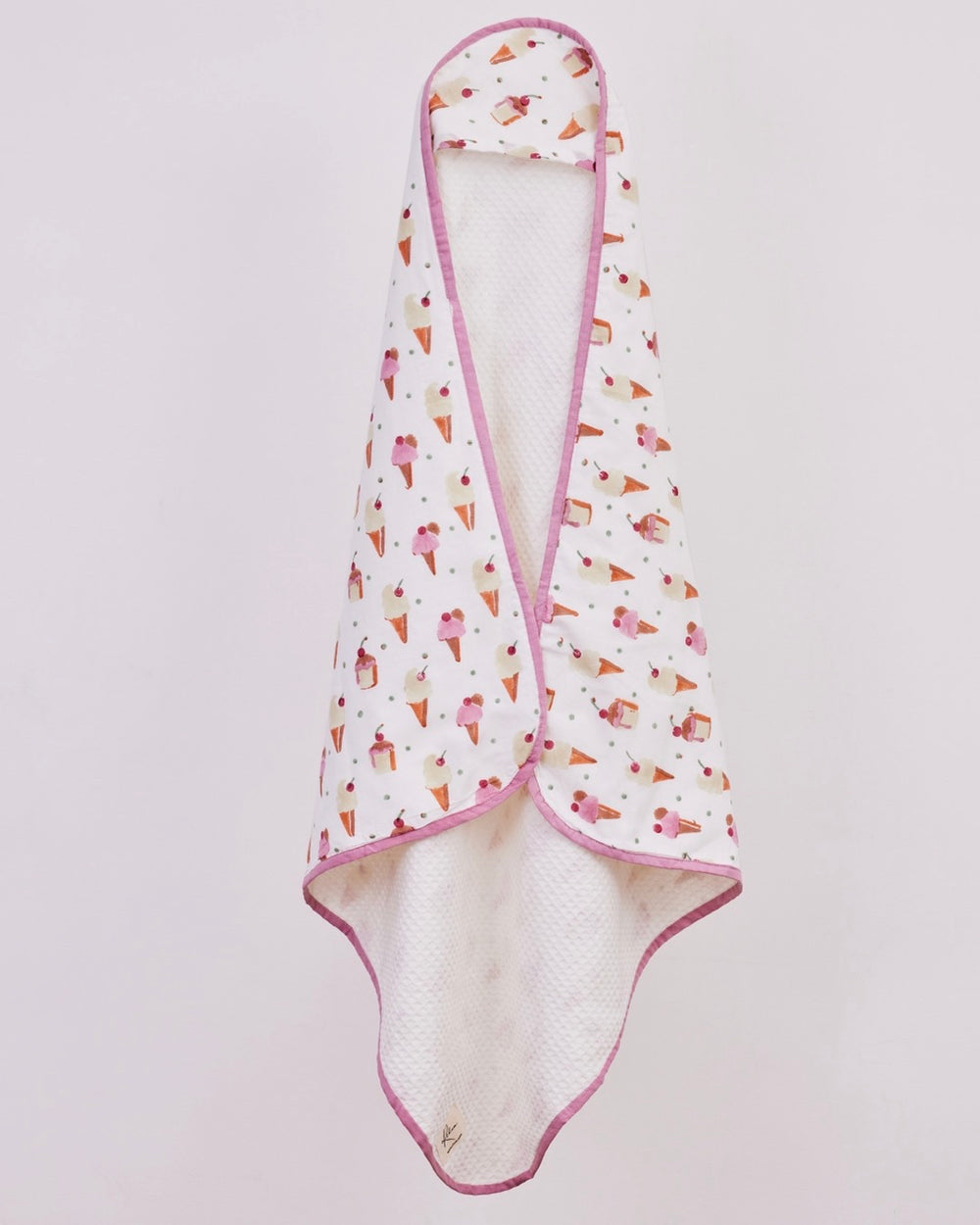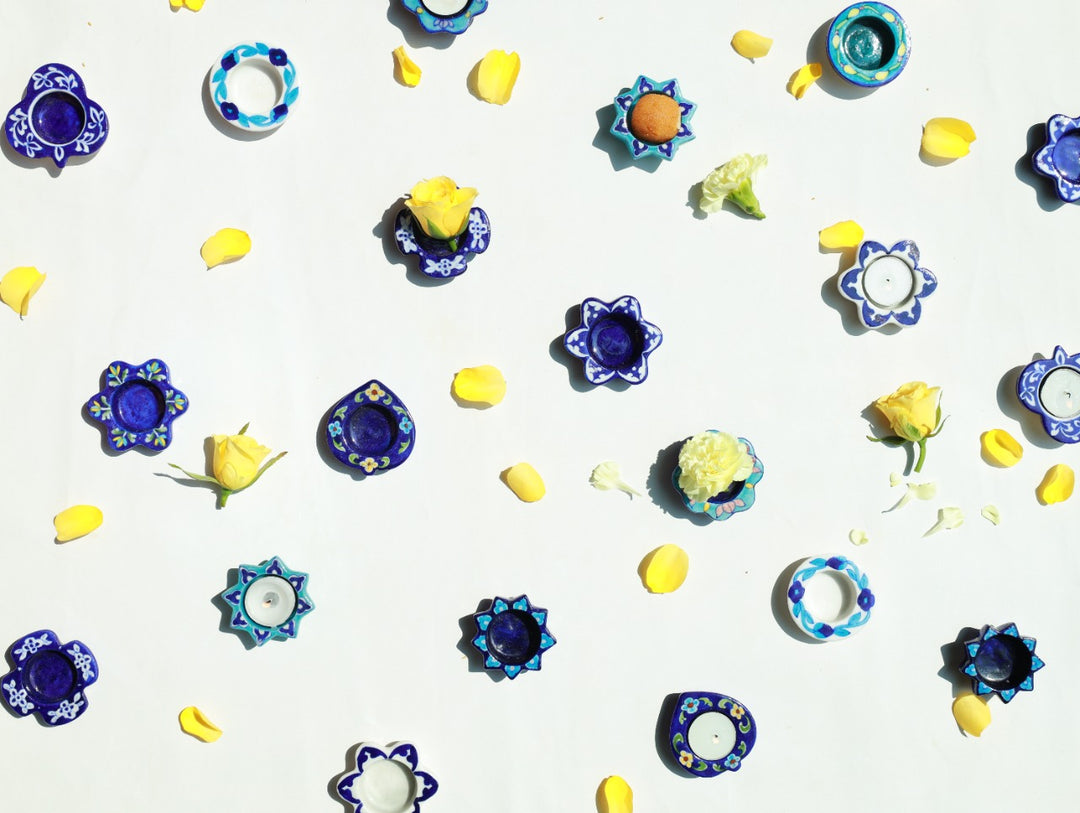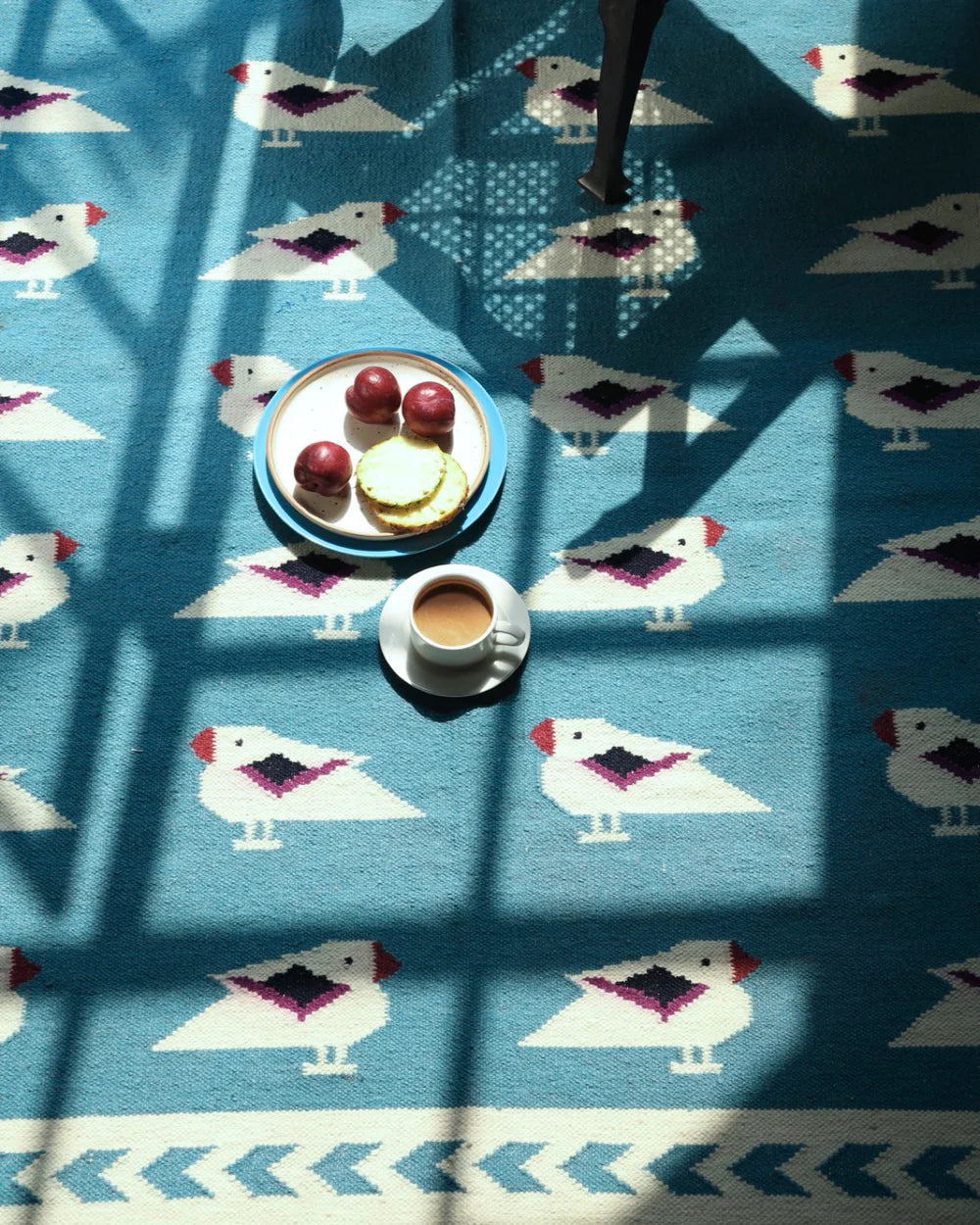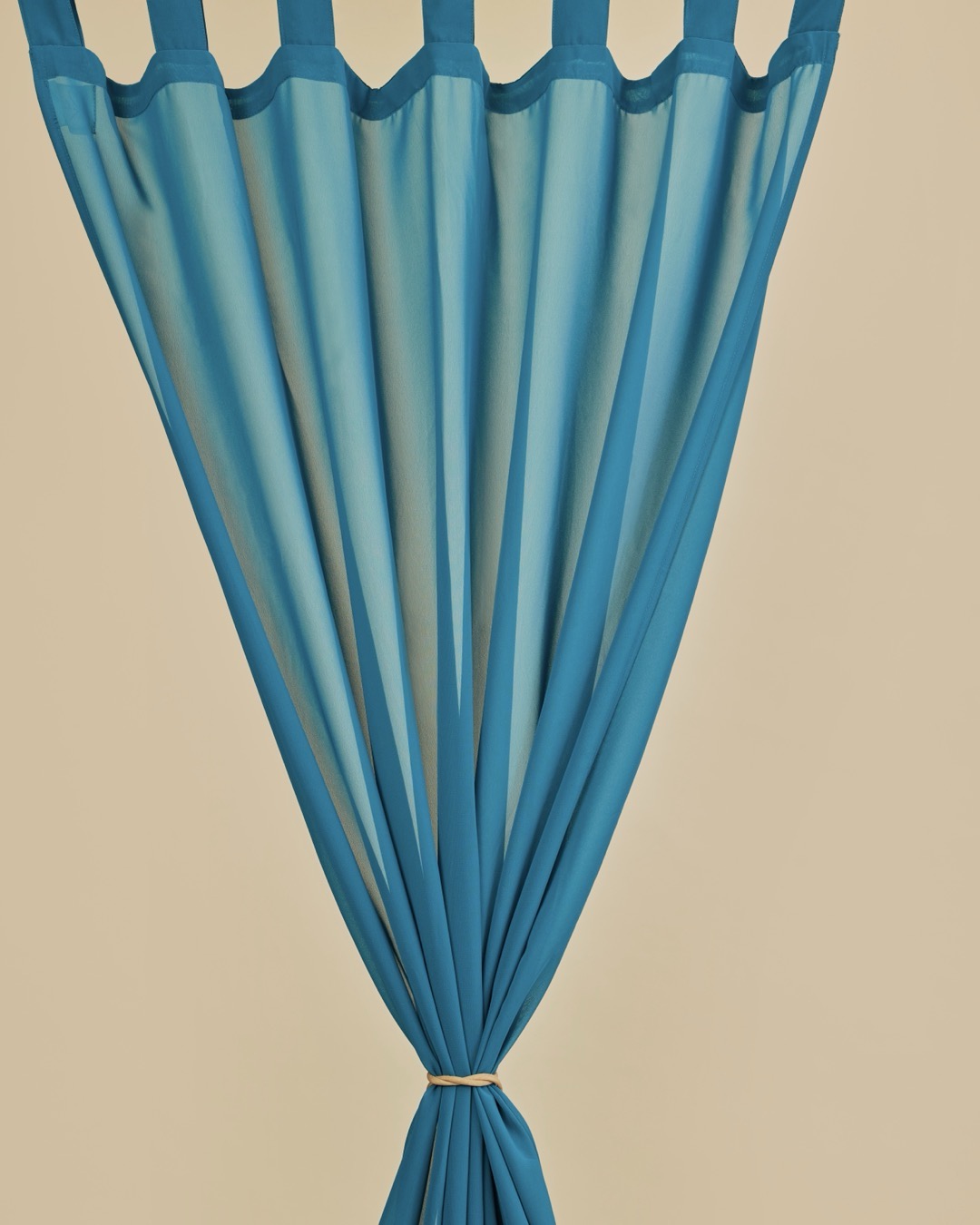Ajrakhpur: A Town in Indigo
Bahaar Meera Jain
29th September 2021
THUD!
SPLASH!
THUD!
I close my eyes against the almost rhythmic onslaught of whip-like splashing noises in my ear. With each splash a gentle spray of indigo rich water hits my face, mingles with sweat and slides down my neck. I want to savour this moment; I have waited for 6 months to be here, in this colourful, meaningful chaos with streams of brightly coloured water, enriched with history and the livelihoods of approximately 500 people and their families. I am, after all, in Ajrakhpur, land of the famous block printed fabric, Ajrakh. Ajrakh is seeing an upsurge in the market these days, with many leading brands- including mine- turning towards it for their apparel or home decor lines. As a result, it is one of the most expensive forms of block printing today, facing challenges associated with fast fashion trends. I’m here to meet Mr N Khatri, an eleventh generation artisan working with thirty craftsmen.

Traces of dye found in earthen pots of the Indus Valley civilization suggest that ‘Ajrakh’ meaning ‘blue’ in Arabic - owing to the lush use of Indigo- has been practiced for thousands of years. People of the Khatri community are the main craftsmen. The Khatris are traditionally Rangrezas or ‘people working with colour’. History suggests that they are descendants of people from Sindh and are relatives of the Bagh printers (also Khatris) of Madhya Pradesh. The similarities in the printing process hints at a shared past. When they first came to Gujarat in the 16th Century, Khatris practicing Ajrakh were patronized by the local ruler and settled in the Dhamadka region of Kutch.

It would be remiss to talk about Ajrakh printing without mentioning one of the features that makes it unique- the blocks. Ajrakh, influenced greatly by its roots, is rich in intricate geometric patterns carved painstakingly on mango wood by carvers of Pethapur. These blocks are stamped with natural dyes in an arduous 16 step process which is greatly dependent on the environment. It starts with washing the fabric with soda ash, castor oil and smearing in Camel dung to remove starch - essential for the dye to percolate the fabric. ‘Kasano’ is the next step, wherein the fabric is washed in a solution of Myrobalan, after which layers of colour are stamped separately. Pigments used traditionally are Indigo for blue, Alizarin from madder for red, and iron oxide mixed with jaggery and tamarind for black.

Many factors threaten the continuation of the craft, mainly environmental. The constituents of water, humidity in the air, the ambient temperature all have their own effect on the outcome of printing. Dependence of Ajrakh on water is immense. The fabric may need to be rinsed in water up to 30 times during its printing. With climate change affecting precipitation and increasing sea levels, salinity of groundwater as well as its free availability for craft is affected. The concept of fast fashion is also hurting the craft, requiring artisans to produce large quantities quickly in a craft meant to be savoured and made slowly. This takes a toll on the environment, with the use of synthetic dyes and indiscriminate usage of water. Iron Oxide percolates the groundwater polluting it. For these reasons migration of Ajrakh craftsmen from Dhamdka to Ajrakhpur post the earthquake of 2001 took place. Dhamadka was chosen by the artisans as the water quality was similar to that of Sindh and colours- which are affected by the mineral composition- were reminiscent of the ones from their homeland.
Organizations such as Khamir and the Government have set up water treatment plants. A Common Effluent Treatment Plant set up by the Government in association with NITRA has shown promise to recycle water. However, little can be done for the receding groundwater levels. Water tables that were present at a depth of 200 Feet are now at 500 Feet, according to Mr Khatri. He fears that over time, the conditions of Dhamadka will be replicated at Ajrakhpur and his family will have to move again. Luckily, he says, his children are in college and will have an option of pursuing other vocations.
For the time being, I pull my mind away from the problems looming in the background, and focus on the melodies in my midst. 100 yards away, men are stamping their wooden blocks on the fabric and their song compliments the washing splashes. There is a whiff of smoke in the air from the curing process of Ajrakh. My eyes feast upon the madder, the deep indigo and midnight black. My senses are ablaze.













Leave a comment